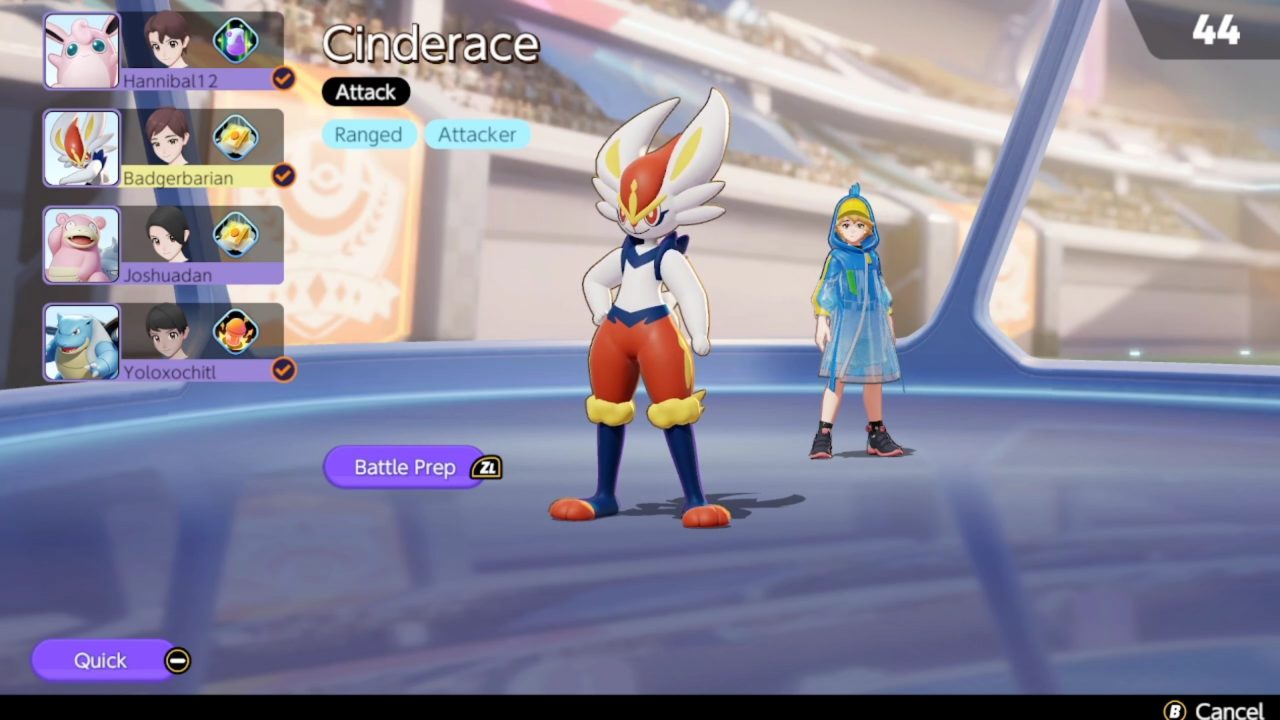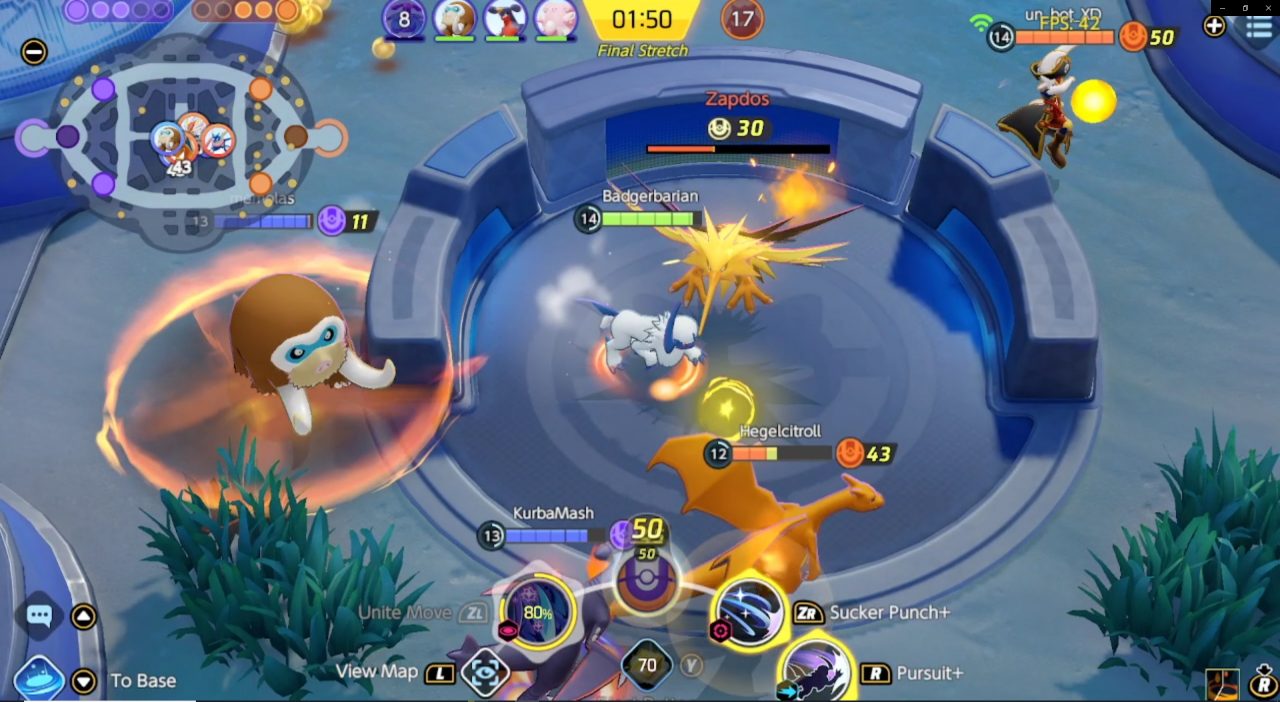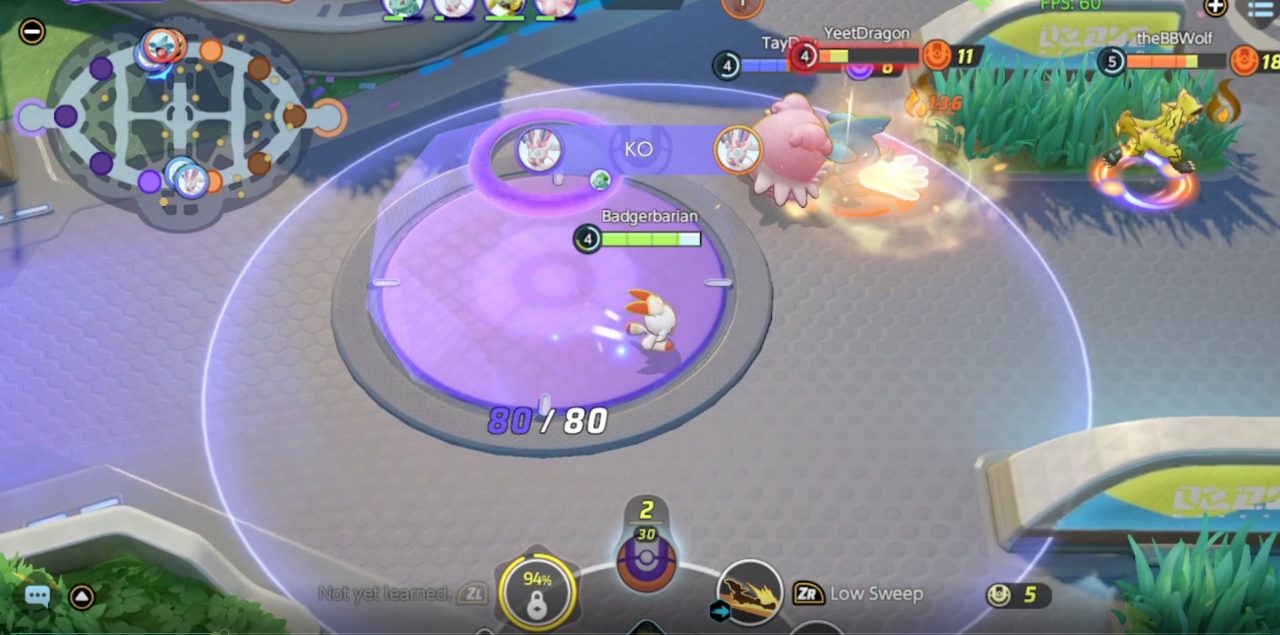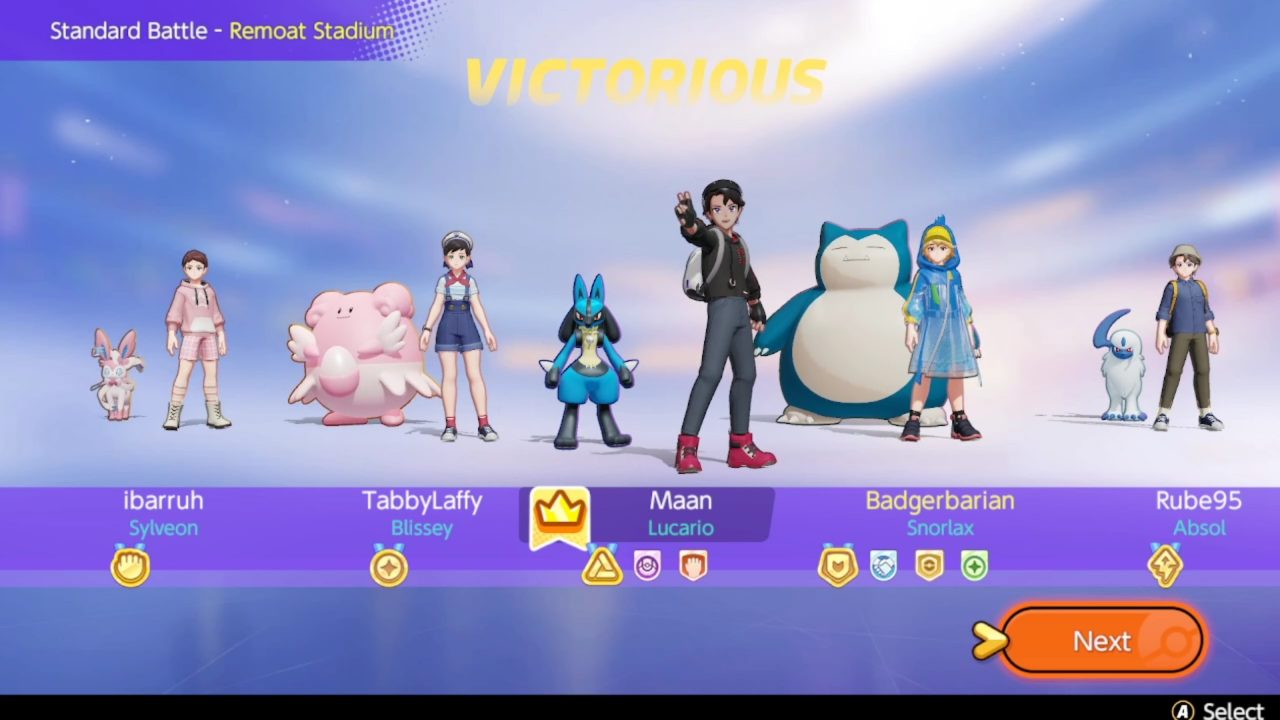When I first heard about Pokémon UNITE, my reaction was one of cautious excitement. MOBAs are some of my favorite games, from the hardcore competitive games to more casual, just-for-fun experiences. But in a genre that’s well-trodden, what does Pokémon UNITE bring to the table apart from an extremely popular cast of characters?
The most notable unique feature in Pokémon UNITE is its scoring system. Though the game’s two-lane map will feel familiar to genre veterans, there are no turrets or bases to destroy. Instead, each team has five goal zones in the primary game mode. As players defeat neutral Pokémon and other players, they collect points, which they can score by dunking them in the other team’s goal zones. Unlike your typical MOBA, Pokémon UNITE doesn’t end after a certain number of points are scored or when targets are destroyed. Instead, every game lasts exactly ten minutes, and then the team who scored the most points wins.
A variety of smaller mechanics support the simple structure of Pokémon UNITE’s battles and add surprising depth to a MOBA that seems simple on the surface. Teams can eke out advantages by forcing enemies away from the neutral Pokémon to gain more experience and potential points or abandon their lane temporarily to outnumber the enemy somewhere else on the map. Pushing defenders away from goal zones can also get your team a critical early experience lead. Lastly, there are two bosses on the top and bottom of the map that teams will have to work together to secure for major points and buffs.

Additionally, while Pokémon UNITE has no item or gold system, players still make meaningful decisions throughout the game. Each Pokémon has two basic abilities and an ultimate ability. As they level up, players will have to choose between two options for either ability. For example, my favorite Pokémon, Cramorant, chooses between Surf and Dive. These decisions completely change that Pokémon’s battle style. Cramorant is a high damage ranged caster with Surf, but with Dive, he plays more like an assassin, dashing into dangerous situations, dealing burst damage, and then dashing out. The result is that you can choose your abilities to create an advantageous approach depending on what is most appropriate for the match.
The cast is a mixture of all-time favorite Pokémon like Charizard and lovable oddballs like Crustle. Each Pokémon fits into an archetype including defenders, who offer high health totals and crowd control, speedsters, who provide high mobility and damage, attackers, who can deal damage from afar, supporters, who bring heals and other utility to the table, and all-rounders, who are well balanced in all areas. Even within the classes, there is diversity in how Pokémon play. For example, Cinderace deals damage primarily through fast, consistent basic attacks, while Alolan Ninetales uses powerful spells that deal damage in a wide area. They feel completely unique despite belonging to the same archetype.
Between each Pokémon’s lovable design, the fast-paced gameplay, and the dynamic Pokémon builds, every game is a blast — at least for the first 8 minutes. During the last two minutes of every game, all points scored are worth double, and Zapdos, the game’s megaboss, spawns in the center of the map. As soon as Zapdos spawns, the entire game revolves around it. Killing the legendary bird grants your team some points on the spot, but the considerable buff it offers is more important by far. The team that defeats Zapdos gains the ability to score points at goal zones instantly, which makes goal zones nearly impossible to defend. Since points are also doubled in the last two minutes, losing Zapdos is devastating. I’ve played hundreds of games, and I’ve only seen two teams defeat Zapdos and fail to win the game, no matter what the score looked like before Zapdos spawned.

There’s nothing inherently wrong with having a powerful boss monster. In fact, it’s a staple of MOBAs. That said, there are a few issues with the way Zapdos impacts a game of Pokémon UNITE. First, there’s no good way to secure Zapdos when your team is ahead. Most MOBAs have a role that can deal heavy damage to neutral monsters, so you can simply chase off the other team’s character to prevent them from taking the monster. Other games require your team to stand where the monster died for a few seconds to get the buff. Pokémon UNITE, in contrast, has minimal options for securing objectives. This means if your team is ahead, starting Zapdos is always dangerous as a single errant ability from an opponent can steal Zapdos and the game.
In a close game, Zapdos is fun. It forces teams to have a big climactic fight over an important objective. When you are very ahead, Zapdos feels awful. If anyone on your team starts Zapdos, it will feel like you’re betting the game on a coin flip. Worse, if you outplay the other team for 8 minutes and make one mistake around when Zapdos spawns, you lose. Comeback mechanics are important in MOBAs, but Zapdos can make it feel like the first eight minutes of the game don’t matter.
Fortunately, Zapdos is something that could potentially be tuned in the future. The game has already seen several balance adjustments that have slowly but surely improved the game. Currently, the Unite Battles are very fun, and even more so if you play with a group of friends. Still, Zapdos is going to frustrate you if you’re a competitively-minded player.

I’ve focused on the game’s primary 5v5 game mode, but there are also quicker 3v3 and 4v4 modes on rotation on smaller maps. These game modes usually take 5-6 minutes, so they’re perfect for when you just want to get a quick game in. These modes also have no ranked option, so if you’re looking for a casual experience, these game modes are a good place to start.
One pleasant surprise in Pokémon UNITE was how well it controls. Coming from PC MOBAs, I was worried about how the genre would handle on a console. In Pokémon UNITE, movement is smooth while a mixture of auto-aiming and manual aiming makes it easy to get abilities where you want them. The only difficulty with the game’s controls is targeting specific enemies when multiple are in range. Auto-targeting doesn’t always reach the target you want, and manual targeting is a little clunky. Once you’ve gotten used to manual targeting controls, however, you’ll be controlling your Pokémon like a pro.
Unfortunately, Pokémon UNITE’s free-to-play model means there is more to discuss than just its gameplay. The monetization model is a bit painful for free-to-play and paid players alike. The game offers a handful of free Pokémon in your first couple of weeks of playing, but beyond that, character acquisition is slow. Players should expect to be grinding for weeks for some of the more expensive Pokémon. Pokémon can also equip held items, which can be upgraded with in-game currency or real money. Getting items to max level isn’t strictly necessary to be competitive, but players willing to pay to max out their items will enjoy a small mechanical bonus during the time it takes free to play players to catch up.

Pokémon UNITE’s monetization model is also a little bit confusing. There are five different currencies, some of which overlap or can be converted and exchanged. It doesn’t take too long to get a handle on things, but new players have a learning curve to figure out the most efficient use of each type of currency. There is also a gacha system and a battle pass filled with cosmetics for your trainer and Pokémon alike. Free to Play players can gain a more limited selection of cosmetics from the battle pass compared to purchasers.
Progression for free-to-play players is glacial, but you will get all the things you need to enjoy the game in your first couple of weeks. Players will only feel pressured to pay if they want every competitive advantage or access to a more extensive roster of Pokémon early on.
Overall, Pokémon UNITE is a MOBA with a lot of potential. It’s already great as a casual game with friends, but I believe with some tweaking to Zapdos and removal of the “pay for held item upgrades” option, a strong competitive MOBA lives in Pokémon UNITE. Until then, it’s hard to call it much more than an above-average entry in the crowded MOBA space.


